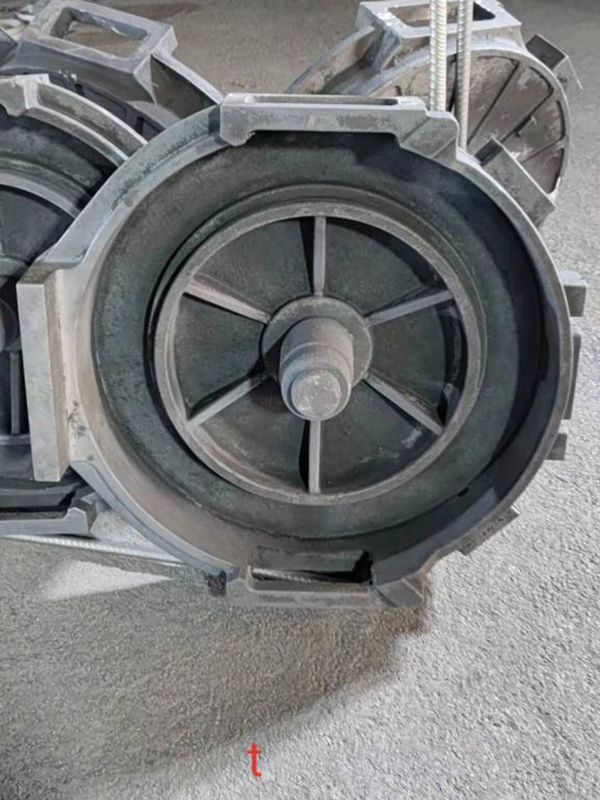Metal Sand Casting Process An Overview
Metal sand casting is a highly versatile and widely used manufacturing process that transforms liquid metal into solid objects with desired shapes and properties. This method is recognized for its simplicity, cost-effectiveness, and capability to produce complex geometries, making it an essential technique in various industries, including automotive, aerospace, and manufacturing. This article delves into the intricacies of the sand casting process, its advantages, challenges, and applications.
The Sand Casting Process
The sand casting process begins with the creation of a mold, which is typically made of sand mixed with a binding agent. To form a mold, a pattern of the desired object is created, usually from metal, wood, or plastic. The pattern is then placed in a mold box, and sand is packed around it, creating a cavity that mirrors the pattern's shape. The packing process often involves vibrations or compaction techniques to ensure that the sand forms a solid, stable mold.
Once the mold is formed, it is opened and the pattern is removed, leaving behind a mold cavity. This cavity is then prepared for pouring by ensuring it is clean and can withstand the high temperatures of liquid metal. The next step involves melting the metal, which can be done using various furnaces, depending on the type of metal being cast. Common metals used in sand casting include aluminum, iron, and brass.
When the metal reaches the desired temperature, it is poured into the mold through a gating system. This system consists of channels that guide the molten metal from the pouring basin into the mold cavity. As the metal cools and solidifies, it takes on the shape of the mold. After sufficient cooling time, the mold is broken apart to retrieve the final casted part.
Advantages of Metal Sand Casting
One of the most significant advantages of sand casting is its adaptability. The process can accommodate a wide range of metal types and allows for intricate designs and large parts, making it suitable for both small and large production runs. Additionally, the sand used in the casting process is relatively inexpensive and widely available, contributing to lower manufacturing costs.
Another advantage is the ability to create complex shapes that would be challenging to achieve with other manufacturing techniques. The use of sand molds allows for undercuts and intricate details, which makes sand casting ideal for complex components. Furthermore, the process can produce parts with good dimensional accuracy, reducing the need for extensive machining after casting.
metal sand casting process

Challenges in Sand Casting
Despite its numerous advantages, metal sand casting also faces certain challenges. One primary issue is related to surface finish. The rough texture of sand molds can lead to imperfections on the surface of the casted product. This can be mitigated through secondary machining processes, but it adds to the overall cost and time needed for production.
Another challenge is the potential for defects in the final product, such as porosity, inclusions, or misruns. These defects can arise from various factors, including improper melting temperatures or inadequate mold preparation. To minimize these issues, careful control of the melting and pouring processes, as well as thorough inspection of the cast parts, is critical.
Applications of Metal Sand Casting
The versatility of metal sand casting allows for its application in numerous industries. In the automotive sector, sand casting is extensively used for producing engine blocks, transmission cases, and various other components. In aerospace, it is used for creating lightweight yet strong parts that can withstand high stress and temperatures.
Moreover, sand casting is employed in the manufacturing of tools, machinery parts, and even artistic sculptures. Its ability to produce both high-volume production runs and one-off custom pieces makes it a vital process across diverse fields.
Conclusion
In summary, metal sand casting is a fundamental manufacturing process that effectively bridges the gap between concept and physical realization. Its blend of adaptability, cost-effectiveness, and capability to create intricate designs cements its role in contemporary manufacturing. Although challenges such as surface finish and defect management exist, ongoing advancements in technology and material science continue to enhance the capabilities and precision of this essential casting method. As industries evolve, metal sand casting will remain a cornerstone of production, enabling innovation and creativity in design and manufacturing.
Post time:Říj . 11, 2024 00:37
Next:Different Methods of Sand Casting Techniques and Their Applications
